8,000 high-resolution digitised book monuments of historical, scientific and cultural value are now available on the National Digital Library portal. Free access and high-quality electronic copies allow each user of the NDL to examine every small detail of these unique documents right from home.
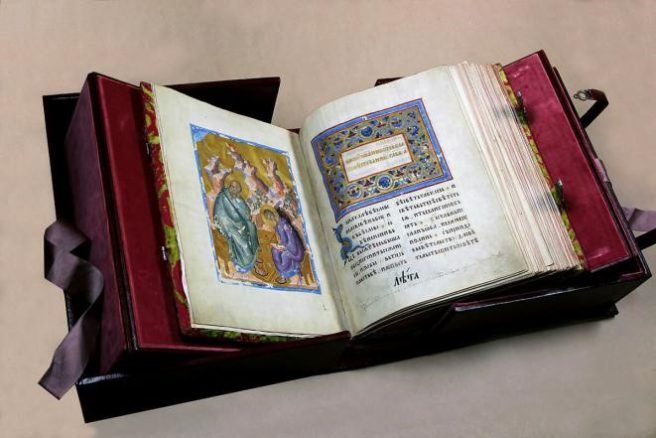
Khitrovo Gospel, 1400. Read in the NDL
Photo by Maria Govtvan, RSL
ABOUT THE PROJECT
Book monuments are printed publications and manuscripts of exceptional spiritual and material value that are characterised by historical, scientific and cultural significance. Monuments include not only old books and manuscripts, but also engravings, posters, music publications and geographical maps. Many of them are genuine works of art that offer a new look at historical events as well as help to better understand the realities of the time when they were created. Until recently, these rare documents were available only to specialists, however they might be interesting not only to professionals.
The ‘Book Monuments’ portal is meant to open access to these documents for everyone. It creates a basis for an extensive digital collection of valuable documents that are stored in libraries all over the country. The development of the collection, subsequent digitisation as well as the uploading of book monuments into the National digital Library all take place within the larger framework of the National Project “Culture”.
For a document from one of the Russian libraries to become part of the project, it must be assigned the status of a book monument, which comes with an entry in the national register. The selection of documents to be included in the register is carried out by experts, while their new status is assigned by the expert council. The most prominent of these publications are then digitised, and their electronic copies become freely available on the NDL’s Book Monuments portal, operated by the Russian State Library.
Currently, the project includes about 8,000 manuscripts, books, posters, and ‘lubok’ pieces from the collections of the Russian State Library and the National Library of Russia. In 2020, the same number of items will be made available for free public access. And by 2024, 48,000 documents will have been digitised.
At the moment, all the monuments are classified into eight categories or topical sections.
8 TOPICAL SECTIONS:
Slavic-Russian manuscript books
Slavic Cyrillic books of the late 15th – early 19th century
Civil font Russian books of the 18th – first quarter of the 19th century
Books of the House of Romanov
Russian posters of the late 19th – first quarter of the 20th century
Russian lubok (folk art) of the 18th – early 20th century
Russian geographic maps of the 17th – first half of the 19th century
Leningrad during the Great Patriotic War
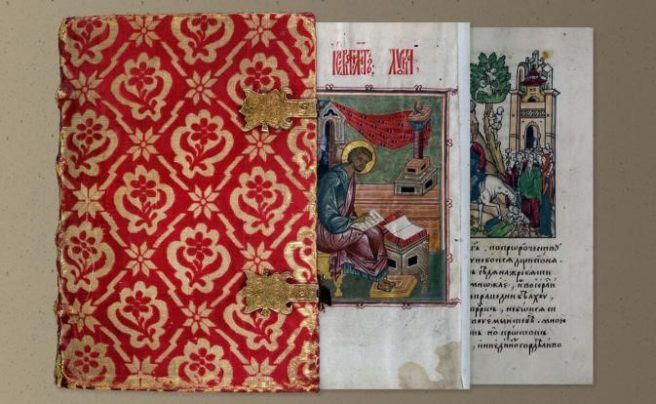
The Gospel Teaching from the collection of manuscripts of the Old Believer E. E. Yegorov (mid-16th century) is one of the best examples of the Russian manuscript book of the time of Tsar Ivan the Terrible and Macarius, Metropolitan of Moscow. Read in the NDL
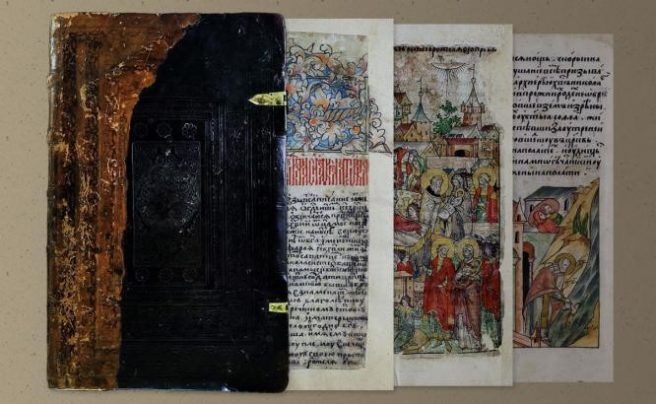
The life of Saint Nicholas, the Miracle Worker of Myra (4th century). The book was created in book house of the Moscow Kremlin in the 1570s. Read in the NDL
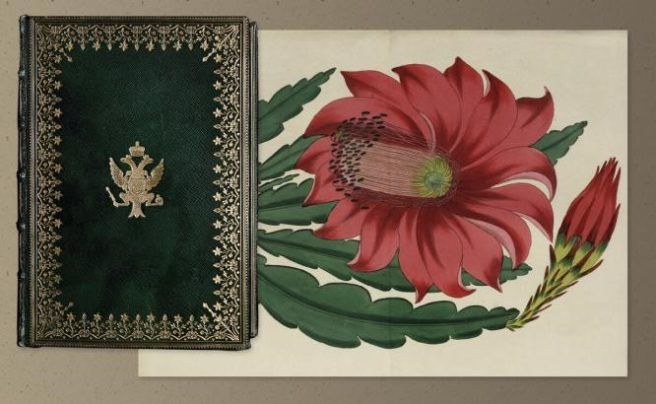
Paxton’s Magazine of Botany, 1834. A copy from the personal library of Empress Alexandra Fedorovna (the elder). Read in the NDL
This year, more items will be digitised and added to the archive – 250 books published in the first hundred years of book printing, which are often referred to as incunabula and paleotypes. In addition, a new section called “Outstanding Book Art Monuments of the Second Half of the 16th – 21st Century in Russian Collections” will be created.
In 2020, more Russian libraries will be joining the digitisation project. Taking into account the collection profiles of regional libraries, two more sections will be added to the NDL to accommodate the new participants of the National Project, “Early Books Published in Russia in National Languages” and “Printing Monuments of Regional Printing Houses of Russia”.
The “Book Monuments” project gives an opportunity to learn about the historical, cultural and artistic heritage of Russia.
INTERESTING DOCUMENTS FROM THE NDL COLLECTION
The earliest manuscript book presented in the project is the manuscript Collection of Words and Teachings (1076).
Among the already digitised book monuments, of particular interest are the Simon’s Gospel, one of the most famous monuments of the ancient Russian book culture of the 13th century, and The Drawing Book of Siberia, the first Russian manuscript geographical atlas.
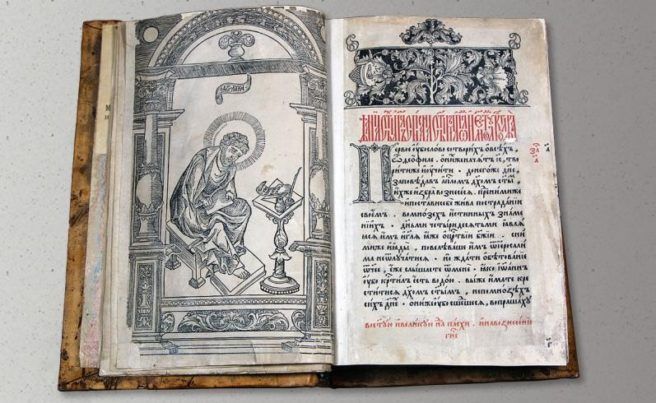
Apostle, 1564. The first accurately dated book printed in Moscow. The creators of the Apostle were two pioneer printers – Ivan Fedorov and Peter Timofeev Mstislavets. Read in the NDL

Gospel of Elisavetgrad, 1595-1606. This manuscript stands out primarily due to its unique miniatures. It was created in the bookstore of the Moldavian Metropolitan Anastasie Crimca (1560-1629). Read in the NDL
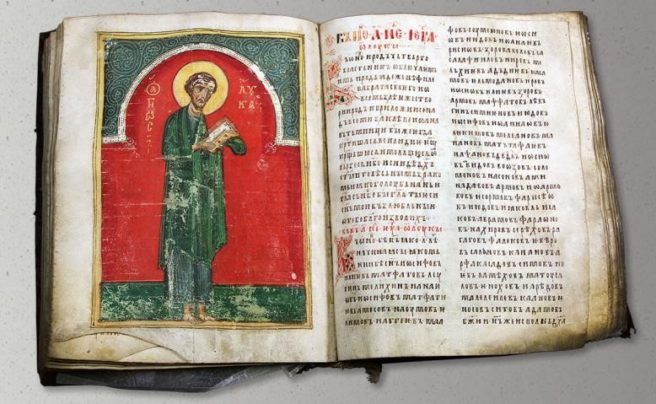
Simon’s Gospel, 1270. One of the most famous monuments of the ancient Russian book culture of the 13th century, named after the monk Simon from St. George’s Monastery in Veliky Novgorod who commissioned the gospel. Read in the NDL
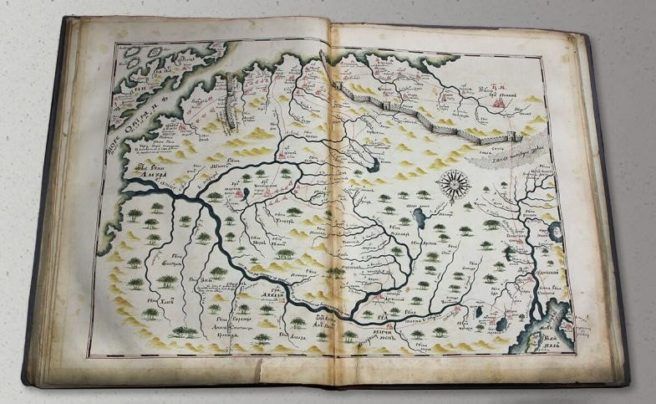
Semyon Remezov’s Atlas of Siberia, 1701. The book, known as the Drawing Book of Siberia, is the first Russian manuscript geographical atlas created in 1701 by Semyon Remezov (1642 – after 1720) by state order. Read in the NDL
The gem of the Slavic Cyrillic Books section is the Apostle, the first accurately dated book published by Ivan Fedorov and Peter Timofeev Mstislavets in Moscow in 1564.
The book monuments also include witness accounts of the events of the Second World War. For example, the collection of the National Library of Russia “Leningrad during the Great Patriotic War” provides access to posters and leaflets published in the besieged Leningrad.